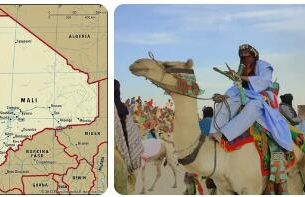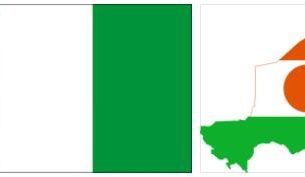Africa education
In the Arabic-speaking countries of Africa, education and upbringing are often an integral part of Islamic cultures. The sub-Saharan countries contain what is meant here by African educations, although these do not form a uniform group. Differences in upbringing and education can be attributed to differences in geographical, historical and cultural background. See a full list of African countries from Countryaah.
In Europe, the school emerged as a writing-reading school that imparted the elementary skills and the Christian doctrine of faith through scripture; on the contrary, conditions in sub-Saharan Africa were determined by the absence of their own scriptural systems or written religions. Therefore, there was also no canonized book or dogmatic teaching that could be interpreted and practiced in school. Apart from the Koranic schools in the north and the so-called “bush” schools in the east and west, the upbringing therefore developed only to a small extent into a formal schooling alongside practical life. The original “bush” schools were initiation schools at the transition from child to adult. Best described is the so-called Poro school system in Liberia, Sierra Leone and Togo.
The European mission societies (Protestant and Catholic) founded the first schools in the European sense. They quickly realized that teaching was a necessary precondition for the spread of the Christian message. The mission school came to dominate the teaching sector for many years because, in addition to the religious upbringing, it also gradually took on the educational tasks in which the colony administrations were interested. In step with this, they became more academic and exam-oriented. This feature was common to both the English and French colonies. The first systematic discussion of the missionary pedagogical problems in Africa took place during the Edinburgh Mission Conference in 1910.
In addition to the common features, there are also clear differences in the educations in the French- and the English-dominated areas. France practiced, even in the post-World War II period, a strict policy of assimilation and association. The French colonial schools were, for better or worse, almost faithful copies of the schools of the mother country. As early as 1924, the mission schools were to align with the French state school as a model.
England showed greater interest than France in adapting education to African conditions, recognizing the possibility of later self-government. The education of Africans – in addition to primary school – started earlier in the English than in the French territories. In 1923, the Advisory Committee on Education in the Colonies was set up, which until 1961 advised the African countries on education issues. Over the years, the committee increasingly delegated its control functions to regional and local bodies, so that the former English colonies also after independence have retained a relatively strong element of local influence in the educations. Characteristic of English colonial rule was also racial segregation), which in Kenya and Tanzania, for example, led to different schools (also of different standards) for Africans, Arabs, Asians and Europeans. Despite the expansion of primary schools, illiteracy was widespread in colonial times. The schools remained few and scattered.
Between 1956 and 1964, most African countries gained their independence. The New Independent States all regarded education as the key to their social and economic development and cultural rebirth. Over the years, a 6-year basic education has been accepted as a minimum in the vast majority of countries, which has meant a huge expansion of this area. But the economies of African countries have found it difficult to finance a corresponding expansion of higher and higher education. Today, the necessary external assistance is provided bilaterally or multilaterally through the World Bank and the United Nations. The principles of this assistance were laid down in 1988 in a document from the World Bank, Education Policies for Sub-Saharan Africa.
Africa mass media
Africa – the mass media, the written language and the mass media came late to the real Africa. The first Africans wrote in African languages for approximately 200 years ago, first with the Arabic, then with the Latin alphabet. Print media came first with the colonial powers, and the orally transmitted history, myths, legends and narratives are still an important part of the African heritage.
No other continent is so poorly endowed with mass media as Africa. The statistics are inaccurate and partly out of date, but the latest figures from the UN organization UNESCO indicate that shortly before the year 2000, only about 10 newspapers were printed per year. day per 1000 Africans south of the Sahara. Only 3-4% of households had television and 18% radio. Although the distribution of the media is very modest compared to other continents, the importance for the political debate and development is increasing.
Radio is important and informs most people on a continent where illiteracy is still prevalent. Newspapers are expensive and difficult to distribute. It is expensive to have TVs that require power supply; the radio, on the other hand, can operate on batteries. From 1970 to 2000, there has been a great development in the field of radio from about 30 to 180 radios per. 1000 residents of sub-Saharan Africa.
In the 1970’s, most states were largely without television, but today television plays an ever-increasing role, especially in cities. There are many viewers around the individual TV set. However, the lack of opportunities and poor economy of African television stations mean that well over half of the programs in many countries are imported – including many American entertainment series.
African media development has been characterized by the fact that only a few governments allowed a free press. The media have been directly or indirectly government-controlled, and the opportunities for debate were severely limited. African governments have criticized the rest of the world’s media coverage of Africa and called for better and more balanced news coverage. But attempts to create alternatives, including through a Pan-African news agency (PANA), have failed both due to lack of capital and poor press freedom.
Since the 1990’s, the wave of democratization has meant new freedom for the press in many countries, and new publications continue to emerge. Despite their limited circulation, the print media plays a key role in the debate on the future of Africa, but the situation is very different from country to country. Free media is still considered a threat by many in power. Most radio and television stations are still subject to state control.
Since 2000, developments in the field of communications have been largely influenced by the proliferation of mobile phones and the Internet. Millions of Africans who have never had access to landline telephony talk on cell phones on talk time cards. And the Internet plays a very big role, even though it is primarily an urban phenomenon, and the prevalence is less in sub-Saharan Africa than on the other continents. There are now internet cafes in almost every city. Taken together, mobile telephony and internet expansion have led to a dramatic growth in access to information for millions of Africans.
Africa – landscape
Africa is a compact continent almost without peninsulas and fjords. The landscape is generally a flat, high plateau; in many places the plateau ends quite abruptly at the coast. The continent has only large mountain ranges far to the north (the Atlas Mountains) and south (the Cape Chain); single volcanic cones make up the continent’s highest mountains: Kilimanjaro (5895 m) and Mount Kenya (5199 m) in East Africa. They mark themselves in the flat landscape like the great burial ground Rift Valley, the Cameroon Mountains, the Ethiopian Highlands and the Hoggar and Tibesti Mountains in the Sahara. These structures, like the African island mountains, have their background in the geological history of the continent. The island mountains rise markedly on the plateaus as the most resistant remnants of the former landscape.
Locally, soil conditions can vary widely, and mapping of these is deficient. A distinction is made between elevation areas and basin areas with deposit soils; in general, the very old deposit soils are found in West Africa, while the East African soils are younger.
Natural geographical regions
As the African landscape is without large height differences, the continent’s symmetrical location around the equator is crucial for the climate and natural conditions in general. In Central and North-West Africa, the natural geographical regions are designated from the equator and north: Guinea, Sudan, the Sahel and the Sahara, where the declining rainfall is the decisive factor. This pattern can partly be found south of the equator.
Around the equator, the temperature is constant and high, averaging 24-28 ° C, and the diurnal variation is greater than the annual variation; the precipitation is constant and large. Here are different types of evergreen rainforest; along the coasts there are mangrove forests that can withstand regular flooding of salt water. Inland there are the typical rainforests with great species diversity; the forest stands on several floors and the forest floor is moist, dark and relatively cool. The rainforest area has been exploited for thousands of years by peoples with different production systems; smaller family farms using some form of sweating are the most common, but there are still people like the pygmies who live as hunters and gatherers in the rainforest.
South and north of the rainforest, where precipitation is less and may be absent at times, plant growth becomes more dispersed and the rainforest is replaced by savannah. The savannah areas are inhabited both by settled farmers and by nomads; the two different population groups have some exchange of goods and services, but they are also competitors of the territory. Kikuyu (farmers) and Masai (nomads) are an example from East Africa, hausa and fulani are an example from West Africa.
The tsetse fly, which thrives in humid areas and spreads the cattle disease sleeping sickness, sets the limit for the spread of cattle breeding in tropical Africa and thus also the limit for nomadic culture.
In northern Africa, where the savannah is replaced by the Sahel, there is a short rainy season and a long dry season; the precipitation is unstable, and when it finally rains, it can be heavy; the water flows in river beds that can be completely dried out during the dry season (wadier). The drier the area, the more scattered the plant growth becomes; Drought-resistant plants such as acacias are among the characteristic species in the semi-desert area, and grass is mainly seen only in the rainy season. In this area, nomadism is widespread, sometimes combined with a little farming.
Around the tropics are the desert areas of Africa. Here the daytime temperatures are very high but the nights can be cold. The evaporation is very large and the precipitation is completely inadequate. The Sahara in North Africa is the world’s largest desert (8-9 million km2); to the south lies the Kalaharias a desert that is largely stabilized with plant growth. In the coastal areas where cold ocean currents are prevalent, the two deserts extend all the way to the sea. Hunters and gatherers such as the San people of the Kalahari, and cattle and trade nomadic groups, such as the Tuare.g. in the Sahara, have lived for centuries in the desert areas. Where there is high groundwater, the nomads have their oases and wells. During the 1900-t. the conditions of the nomads changed radically; Among other things, their mobility has been limited in competition with farmers.


